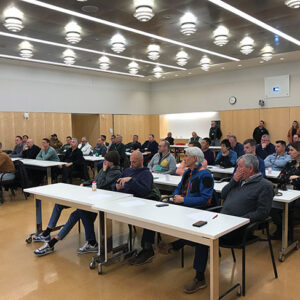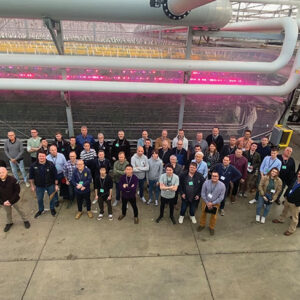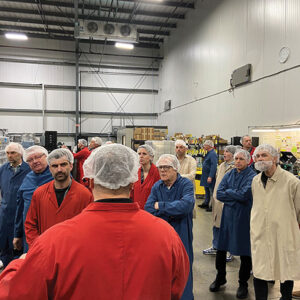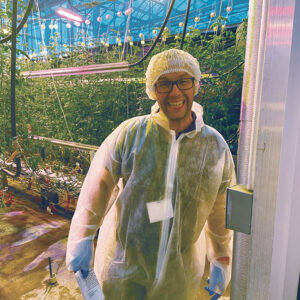
Features
Focus on: Lighting
Tomato growers coming together
Three-day event brings international growers together to share experiences and to learn about greenhouse operations and growing under LEDs
October 18, 2023 By Kerstin Poehlmann
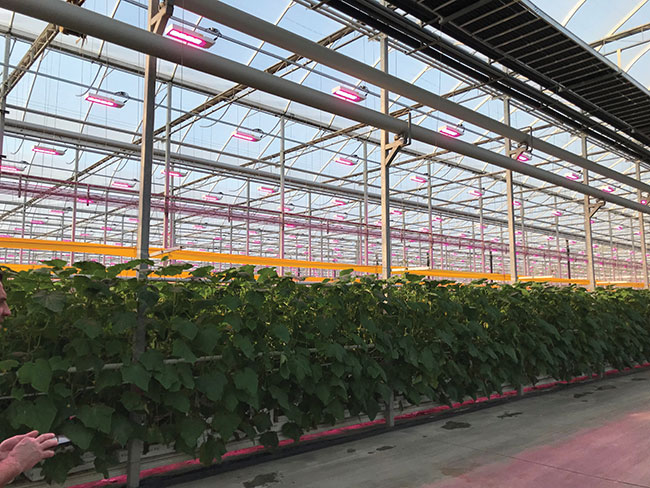
Crop-specific community events bring growers from around the world together to not only learn from the operations they visit, but also from each other. Philips horticulture team has been hosting tomato community events annually since 2014 (the 2020 event was cancelled due to the pandemic, and the 2021 event was hosted virtually). One such event, hosted by the Philips LED team from Signify, was held in March of this year in North America and brought 49 tomato growers from 10 countries together, including Australia, Belgium, Canada, Czechia, Finland, Hungary, Japan, Latvia, the Netherlands, and the United Kingdom.
“Our customers are spread around the world, and each country has different ways to grow crops,” explains Ries Neuteboom, Canada Commercial Leader for Philips Horticulture LED Solutions. “We saw the opportunity to bring growers together to visit greenhouse operations, learn about the latest research, and exchange their experiences and knowledge among each other. The feedback is very positive year after year.”
This year’s event started out in the Leamington area of Canada. First stop was Great Lakes Greenhouses in Leamington, a 118-acre state-of-the-art facility with year-round produce production including tomatoes, peppers, eggplant, and cucumbers. Over the years, 20 acres of their facilities have been equipped with Philips LED lighting in combination with GrowWise Control System to make the lighting dimmable. Unlike in Europe and other locations where growers mostly grow monoculture crops in glass greenhouses, attendees learned about multi-crop production in poly greenhouses.
Next up, the group visited Topline Produce, where the focus of the visit was on the company’s packaging and shipping methods. Aside from their own grown vegetables, Topline also markets produce grown by other growers. “Topline’s process is quite a bit different from how it’s commonly done in Europe, so this was a great opportunity for growers to pick up new ideas,” explains Kay Rauwerdink, global segment manager vegetables & fruits for the Philips LED team. “The fact that Topline grows, promotes and distributes its produce using a centralized model is unique to North America.”
From here, the group travelled to Mucci Farms in Kingsville, known as an industry behemoth which owns and operates over 250-acres of tomato, pepper, cucumber, eggplant, lettuce and strawberry greenhouses in Kingsville, Ontario and Huron, Ohio, and an additional global network of over 1,500 acres with partner growers. Since 2021, the 2.7-acre greenhouse visited on the tour has been equipped with a hybrid lighting solution of 50 per cent Philips Toplighting and 50 per cent High Pressure Sodium (HPS) lights, which was their first LED investment ever. Growers learned about their experiences with growing under LED and the reason for rotating tomato and cucumber crops, which is not standard practice in most other countries.
The day was rounded out with a visit to Roelands Plant Farms in Lambton Shores, a premium propagator supplying vegetable growers across North America. Key in their rapid expansion over the past three-to-four years is their high level of automation in the entire propagation process; attendees were extremely impressed with the level of automation. LED lights play an instrumental role in their endeavour for consistent plant quality, as using LEDs reduces their energy use and is a workaround for limited availability of power.
Seeing how these four operations use LED lights in their growing processes provided ample opportunity for growers to learn and exchange ideas. Finding the optimum in LED growing techniques was clearly top priority among attendees. It is still quite common for growers to use a hybrid model of HPS lights and LED lights in their operations. The energy balance emitted by HPS lighting is significantly different from that of LED lighting, and the high levels of radiant heat emitted by HPS lighting can stress or even burn the plants. With LED lighting growers can control heat and light separately meaning growers can apply higher levels of light to plants with 67 per cent less radiant heat than HPS lighting. A lower crop temperature means growers will have to raise the ambient temperature in the greenhouse and manage the related change in humidity. As attendees start to use more and more LED lights, they welcomed the opportunity to learn how to adjust their growing strategy accordingly.
“I’ve been attending the tomato event for over five years now, and I’ve learned so much from other growers about how they manage their heat, for instance, about different ways of growing, and the best ways to utilize the LEDs,” stated one attendee from Finland. “Getting insights into different ways of working with the LEDs over the years has helped us also shape our own strategy,” added one of the attendees from the Netherlands.
The Philips LED community events develop and nurture close relationships between the growers, which continue much beyond the actual events. Growers tend to keep in touch and continue the idea exchange. Hearing what one grower does in one country can open the doors for new opportunities for a grower in another country. For instance, learning how growers in a country with low daylight levels like Finland successfully grow their crops might prompt a grower in another country to start growing a crop that they had previously thought could not be grown profitably under their climate conditions.
At the end of day one, the group travelled by bus to Niagara Falls, where day two was kicked off with a morning of presentations and research updates presented by the Philips LED team. They discussed challenges growers are facing in the transition from growing with HPS via hybrid HPS/LED to growing with full LED, including humidity-management, balancing crop development versus integral pest management, and pollination challenges. Even genetics play a role, as research has shown that varieties respond differently to LED light/spectra treatments. In the afternoon, attendees had the opportunity to visit Niagara Falls before continuing by bus to Ithaca, New York.
Here, the Philips team works closely with researchers at Cornell University. Cornell is growing high-flavour cherry/grape tomato varieties, including Vitalion, with intermediate Brown Rugose resistance, under hybrid and full LED lighting systems to track plant development, fruit quality, and yield. After a presentation on the wider perspective on greenhouse vegetable research by Professor Neil Mattson, Colin Brice – horticulture plant specialist for Philips LED team – presented the tomato trial results. “Hybrid and LED crops successfully managed to have similar crop development and production as well as fruit quality,” said Brice. “The results also showed the same yield in both 50/50 HPS & LED vs full LED at 23 per cent reduction of lighting electricity costs by using LED lighting while running the greenhouse at 2 degrees warmer.” After the presentation, attendees visited the tomato LED trial at the Cornell research facilities, led by Nicholas Kaczmar of Cornell University.
“We learn so much about all the research knowledge that has been gathered when growing with LEDs. Especially the insights around the optimal light recipe and how to manage other factors in the greenhouse to optimize yield are so valuable,” stated one attendee from Latvia, while a grower from the Netherlands added: “When attending the tomato event, you always know you’re around other growers that think alike and use a similar level of technology to get the most out of their LEDs. It’s so inspiring to look around in France, the Netherlands, and this year in Canada and the U.S.”
It goes to show how great the cooperation is between growers, and how open they are to exchanging knowledge and ideas for the benefit and advancement of the entire industry.
Kerstin Poehlmann is president of Pen & Petal, Inc., a marketing communications firm for the green industry. She can be reached at kerstin@penandpetal.com
Print this page
